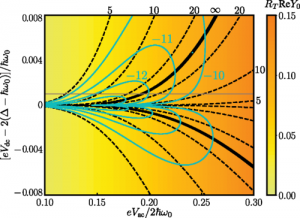RESEARCH
Counting statistics of ultra-broadband microwave photons
We report measurements of counting statistics, average and variance, of microwave photons of ill-defined frequency : bichromatic photons, i.e. photons involving two well separated frequencies, and “white” broadband photons. Our setup allows for the analysis of single photonic modes of arbitrary waveform over the 1-10 GHz frequency range. The photon statistics are obtained by on-the-fly numerical calculation from the sampled time-dependent voltage.
Using an ac+dc biased tunnel junction as a source of quantum microwave, we report an ultra-wide squeezing spectrum representing a competitive source for entanglement generation (up to 0.9 billion measured entangled bits per second) easily achievable experimentally. We also report the observation of quantum steering by the tunnel junction, and show how the presence of squeezing of a broadband mode implies the existence of entanglement between two modes it encompasses.
Related article(s):
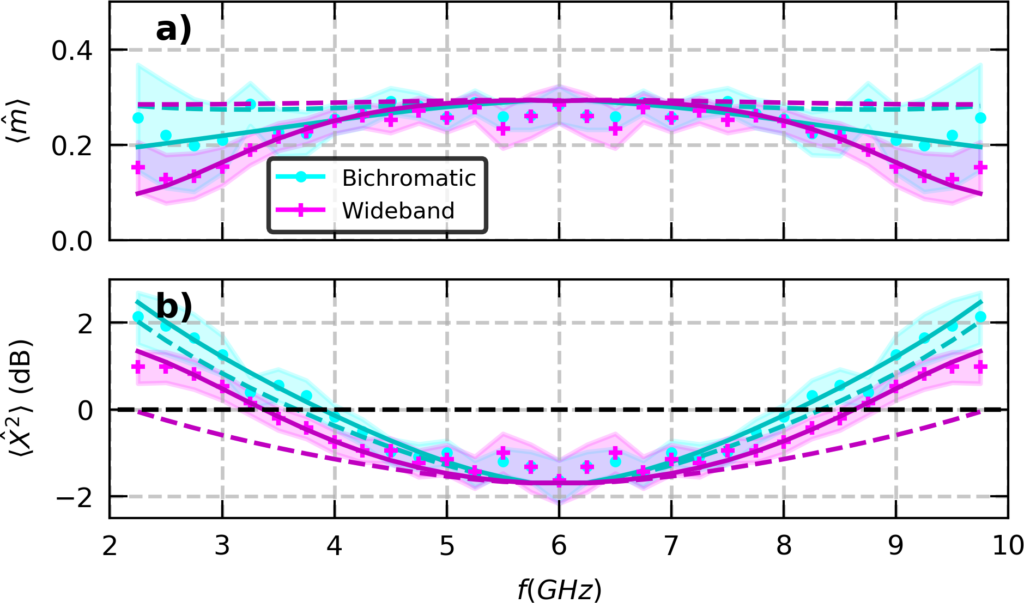
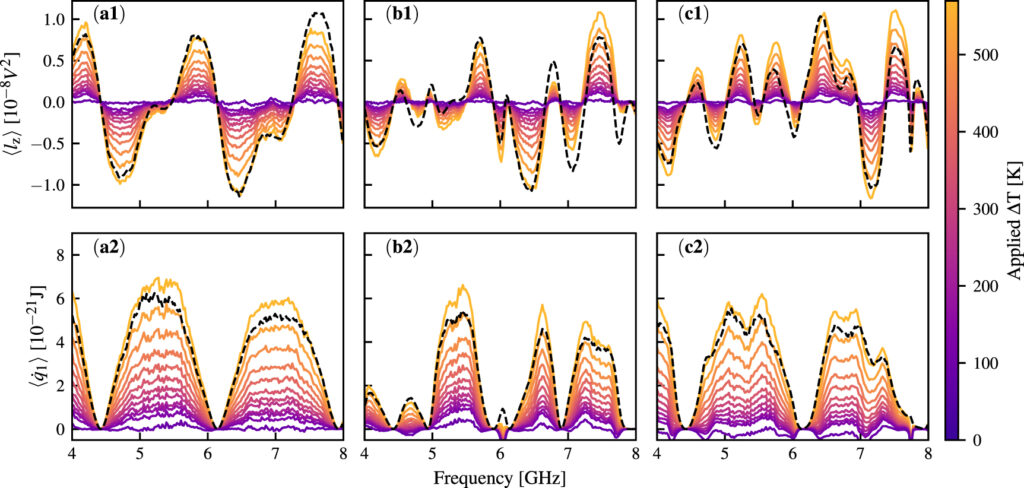
Violation of detailed balance in microwave circuits: theory and experiment
We propose an approach to detailed balance violation in electrical circuits based on the scattering matrix formalism commonly used in microwave electronics. This allows us to easily include retardation effects, which are paramount at high frequencies. We define the spectral densities of phase space angular momentum, heat transfer and cross power, which can serve as criteria for detailed balance violation. We confirm our theory with measurements in the 4–8 GHz frequency range on several two port circuits of varying symmetries, in space and time. This validates our approach, which enables straightforward treatment of quantum circuits at ultra-low temperature.
Related article(s):
Probability Currents in Out-of-Equilibrium Microwave Circuits
Related article(s):
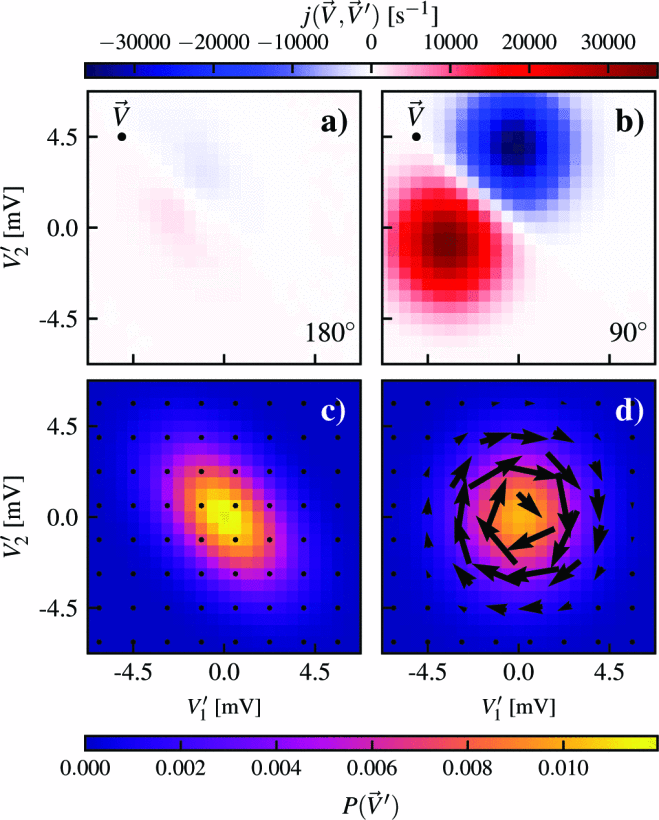
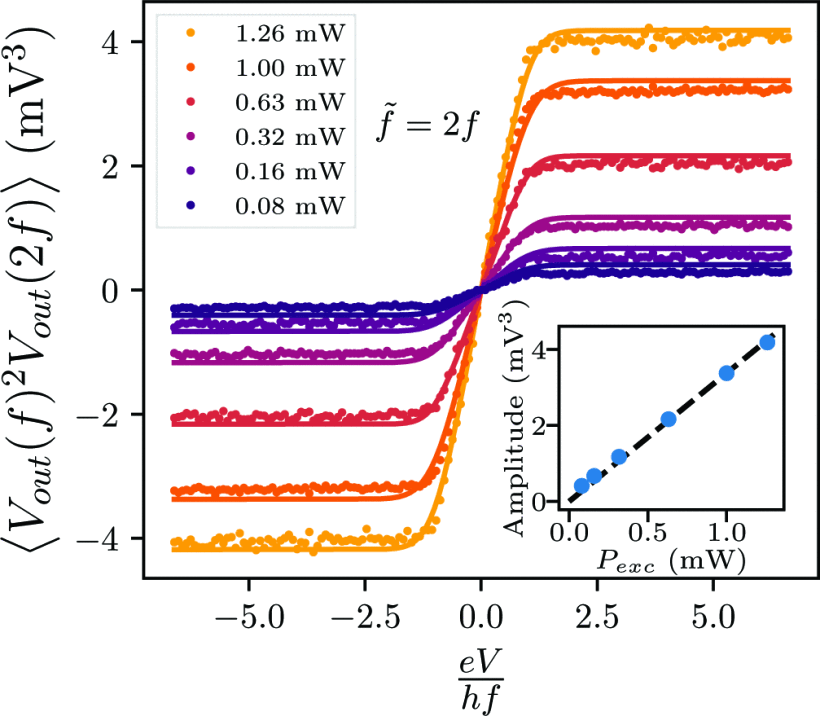
Noise dynamics in the quantum regime
A time-dependent bias voltage on a tunnel junction generates a time-dependent modulation of its current fluctuations, and in particular of its variance. This translates into an excitation at frequency f’ generating correlations between current fluctuating at any frequency f and at frequency ±f’−f. We report the measurement of such a correlation in the fully quantum regime, i.e. when both frequencies are much greater than k B T/h with T the temperature. Such a correlator, usually referred to as the noise susceptibility, is involved in corrections to the measurements of higher-order moments and in the squeezing of noise.
Related article(s):
Low frequency noise in AC biased metallic tunnel junctions
We study the effect of an AC bias on the low frequency noise,
notably 1/f γ with γ < 2, of metal-insulator-metal tunnel junctions at room temperature. The measurement is performed in the 6Hz-100kHz frequency range with an AC excitation above 1MHz. We observe that 1/f γ noise is dominant across our measurements though the shape of the spectra varies. The effect of the DC excitation seems to be very different on the noise generated by the junction than that of the AC excitation, thus questioning the fact that the observed noise is due to resistance fluctuations that the bias only reveals.
Related article(s):
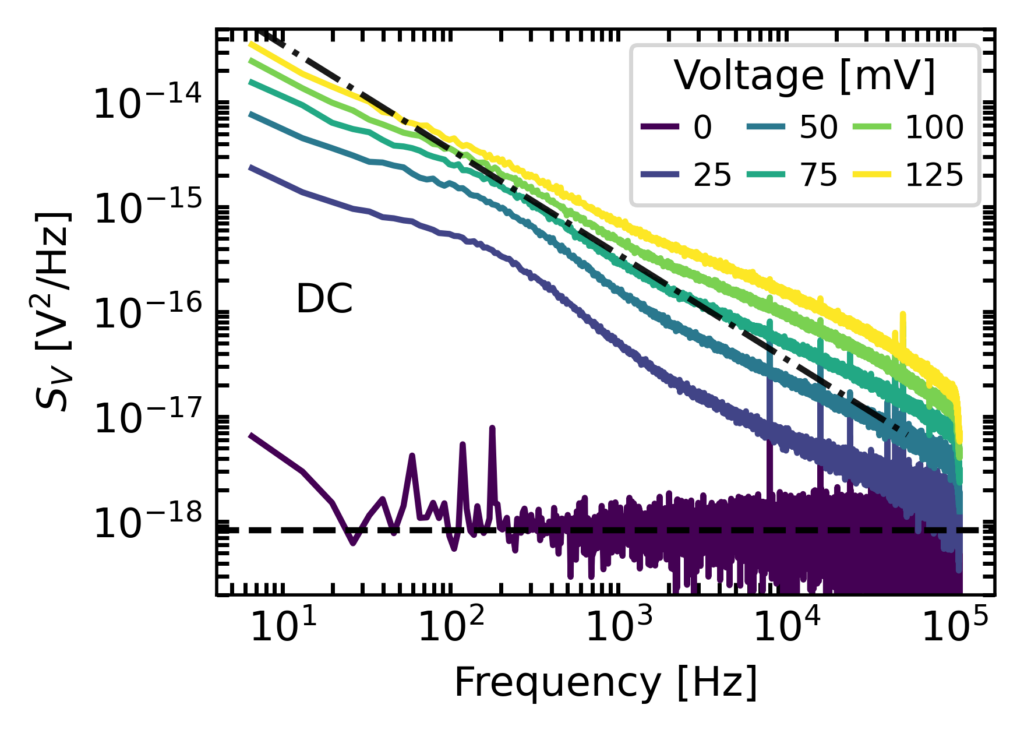
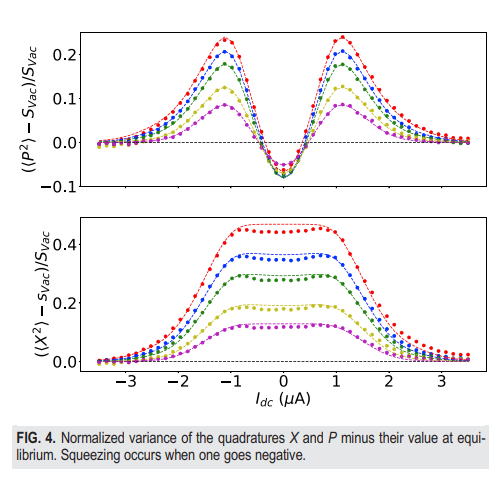
Squeezing electronic noise with two tones
We have calculated and measured the effect of two ac excitations on the quantum shot noise of a tunnel junction. Using a phase-sensitive detection, we demonstrate that the junction generates squeezed microwave, in agreement with theory. While being weak, this squeezing should be extremely broadband.
The growth of quantum technologies based on electromagnetic
waves calls for sources of light with properties that go beyond those of
classical physics. Among them, squeezed light, by focusing quantum
fluctuations along one quadrature while leaving the other one fluctuating at a level below that of vacuum, is of prime importance for quantum sensing. Such a radiation is usually generated using a nonlinear
process, such as parametric amplification. In the microwave domain,
this is achieved often using Josephson junctions.
Related article(s):
Photocount statistics of the Josephson parametric amplifier
Parametric amplifiers are known to squeeze the vacuum state of the electromagnetic field, thus the statistics of the photocounts at their output should be that of squeezed vacuum. However, several theoretical works predict a very different statistical distribution.
We have measured the photocount statistics of a Josephson parametric amplifier and recover the expected squeezed vacuum statistics. We explain this discrepancy by showing theoretically how the photocount statistics is dictated by the detection process. Namely, most experiments will naturally measure a single mode of the electromagnetic field, while the aforementioned theoretical works implicitly describe massively multimode detection.
Related article(s):
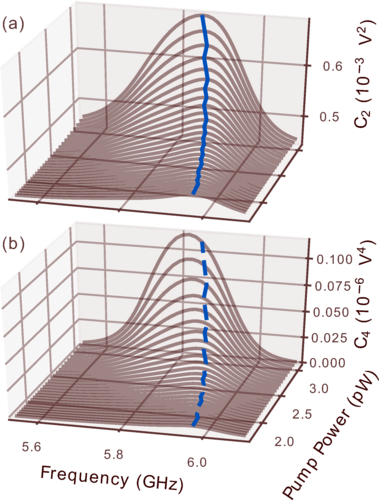
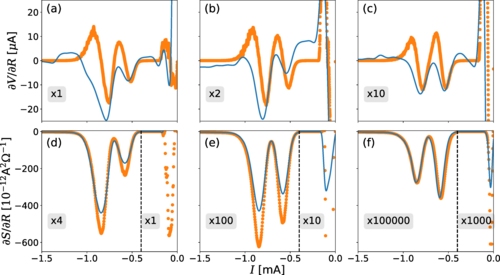
Noise feedback in an electronic circuit
Electronic circuits combine components with intrinsic current/voltage characteristics assumed independent of the circuit. This breaks down for nanostructures at ultralow temperature, a phenomenon usually believed to be of quantum nature.
We report similar phenomena at room temperature in an avalanche diode, whose characteristics strongly depend on the value of a resistor connected in series with itself. We present a theory linking transport and noise to explain our experimental results. The key ingredient is the feedback of the noise of the component on itself.
Related article(s):
Fundamental and environmental contributions to the cyclostationary third moment of current fluctuations in a tunnel junction
Current fluctuations generated by tunnel junctions are known to be non-Gaussian. However, this property is lost when fluctuations are measured at high frequency and limited bandwidth
We show that the quadratures of the electric field generated by a tunnel junction at frequency f displays third order correlations, i.e. skewness, when the junction is electrically driven at 3f, revealing the Poisonnian statistic of charge transfer by the barrier even at short time-scales. In addition to this intrinsic contribution from the junction, we observe extra correlations induced by the environmental noise at frequency f as well as a feedback effects coming from the environmental impedance not only at frequency f but also at some multiples of f.
Related article(s):
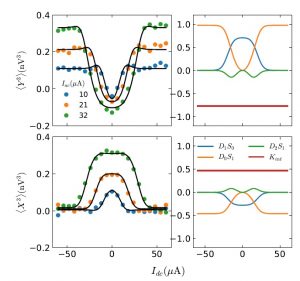
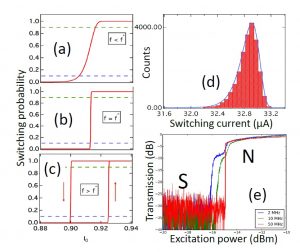
Dynamical I-V characteristics of SNS junction
We have probed the switching dynamics of the Josephson critical current of a superconducting weak link by measuring its voltage/current characteristics while applying an ac current bias in the range 1-200 MHz
The weak link between two Nb reservoirs is formed by an mesoscopic Al wire above its critical temperature. We observe a dynamical phase transition as a function of the frequency and amplitude of the ac current. While at low frequency the transition driven by increasing the current bias is well described by the standard Kramers theory, at high frequency the switching histograms become hysteretic and much narrower than expected by thermal fluctuations. The crossover frequency between the two regimes is set by the electron-phonon interaction rate in the normal metal.
Related article(s):
Unidimensional time-domain quantum optics
Choosing the right first-quantization basis in quantum optics is critical for the interpretation of experimental results. The usual frequency basis is, for instance, inappropriate for short, subcycle waveforms. Deriving first quantization in the time domain shows that the electromagnetic field is not directly proportional, nor even causally related, to the photonic field (the amplitude probability of a photon detection).
We derive the relation between the two and calculate the statistics of the electromagnetic field for specific states in the time domain, such as the single photon Fock state. We introduce the dual of the Hamiltonian in the time domain and extend the concept of quadratures to all first quantization bases.
Related article(s):
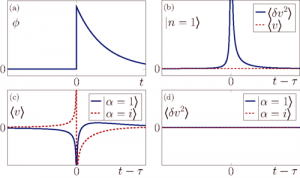
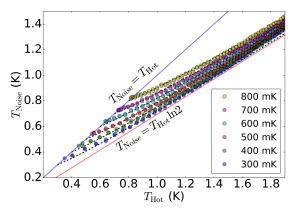
Shot noise of temperature-biased tunnel junction
We report the measurement of the current noise of a tunnel junction driven out-of-equilibrium by a temperature and/or voltage difference, i.e. the charge noise of heat and/or electrical current.
This is achieved by a careful control of electron temperature below 1 K at the nanoscale, and a sensitive measurement of noise with wide bandwidth, from 0.1 to 1 GHz. An excellent agreement between experiment and theory with no fitting parameter is obtained. In particular, we find that the current noise of the junction of resistance R when one electrode is at temperature T and the other one at zero temperature is given by S = 2 ln2 kB T /R.
Related article(s):
Non-Gaussian current fluctuations in a short diffusive conductor
We report the measurement of the third moment of current fluctuations in a short metallic wire at low temperature.
The data are deduced from the statistics of voltage fluctuations across the conductor using a careful determination of environmental contributions. Our results at low bias agree very well with theoretical predictions for coherent transport with no fitting parameter. By increasing the bias voltage we explore the crossover from elastic to inelastic transport.
Related article(s):
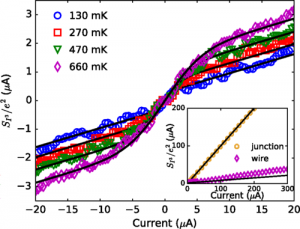
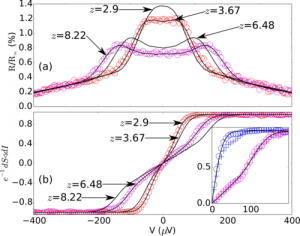
Photon-assisted dynamical Coulomb blockade in a tunnel junction
We report measurements of photon-assisted transport and noise in a tunnel junction in the regime of dynamical Coulomb blockade. We have measured both dc nonlinear transport and low frequency noise in the presence of an ac excitation at frequencies up to 33 GHz.
In both experiments we observe replicas at finite voltage of the zero bias features, a phenomenon characteristic of photon emission/absorption. However, the ac voltage necessary to explain our data is notably different for transport and noise, indicating that usual theory of photon-assisted phenomena fails to account for our observations.
Related article(s):
Direct measurement of the electron energy relaxation dynamics in metallic wires
Energy relaxation of electrons in a conductor is a very important issue both on an applied and fundamental point of view. For example, the energy relaxation rate determines the bandwidth of hot electron bolometers used to detect electromagnetic radiation through heating of the electron gas.
On a fundamental point of view, inelastic times are key parameters for example for quantum correction to electron transport, electron localization at low temperature and non-equilibrium effects.
We developed the measurement of the dynamical response of thermal noise to an ac excitation in conductors at low temperature. From the frequency dependence of this response function in the range 1 kHz-1 GHz we obtain direct determinations of the inelastic relaxation times relevant in metallic wires at low temperature: the electron-phonon scattering time and the diffusion time of electrons along the wires. Combining these results with that of resistivity provides a measurement of heat capacity of samples made of thin film. The simplicity and reliability of this technique makes it very promising for future applications in other systems.
Related article(s):
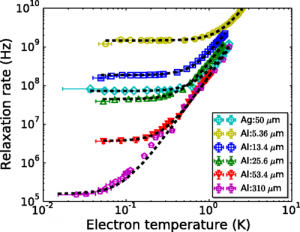
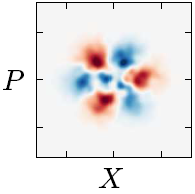
High-frequency non-Gaussian noise measurements in coherent conductors
Non-Gaussian statistics of current fluctuations in small conductors reveals the coherent nature of electronic transport. For example, the correlation between current fluctuations at three different times <i(t)i(t’)i(t’’)>.
The latter example gives insights on the characteristic timescales of transport, such as the diffusion time of electrons in nano wires, dwell times or tunneling rates in quantum dots. However, experiments are limited to timescales longer than 1ns due to a stringent constrain on measurement bandwidth. An additional difficulty is the back-action of the measuring circuit, which leads to additional contributions to the three-current correlation. We developed an experimental approach where the conductor is driven by a sine tone at frequency 3f and the emitted fluctuations are down converted from f to dc. This allows the measurement of <i(t)i(t’)i(t’’)> in a narrow-band at high frequency, and timescales shorter than 1ns can be probed. Using a quantum limited amplification, we can now measure the non-Gaussianity of non-classical radiations emitted by quantum conductors such as a tunnel junction at low temperature.
Related article(s):
Discrete photon statistics
The electric ac current flowing through a mesoscopic device exhibits rich electromagnetic fluctuations. Those fluctuations can either be studied through the lens of charge transport or that of quantum optics.
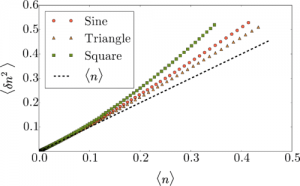
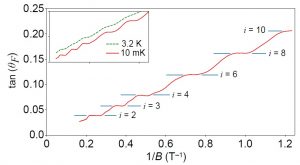
Quantized microwave Faraday rotation
Faraday rotation is the rotation in polarization by the application of a magnetic field in the direction of wave propagation. Also, quantization of Hall resistivity and conductivity in AlGaAs/GaAs hetro-structure based 2DEG is very well known and studied both experimentally and theoretically.
Here we study the quantization of microwave Faraday rotation in AlGaAs/GaAs based 2DEG which arise as a consequence of quantization of Hall conductivity. In contrast to the latter reports, we present a quantitative measurement of Faraday angle along with integer quantization in consistent with transport measurements.
Related article(s):
Wide band near quantum-limited cryogenic amplifier
The project consists of the development and characterization of the performance of a simple design, single or few SQUID-based cryogenic amplifier which uses the quasiparticle branch non-linearity.
A flux line allows modulation of the critical current by controlling the magnetic flux and a stub filters higher harmonics of the pumps and signal frequencies. The SQUID is dc-biased just below the gap and an AC-pump is used to modulate the admittance to obtain enough coherent conversion of photon pairs while keeping low the single-photon dissipative response and therefore achieve significant gain and squeezing over a GHz bandwidth.
Related article(s):
